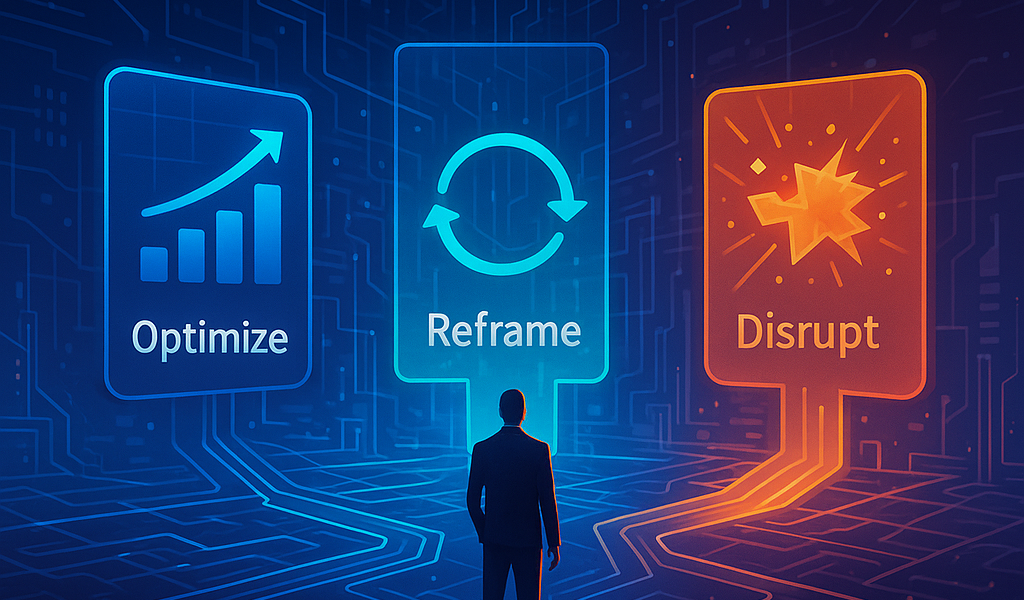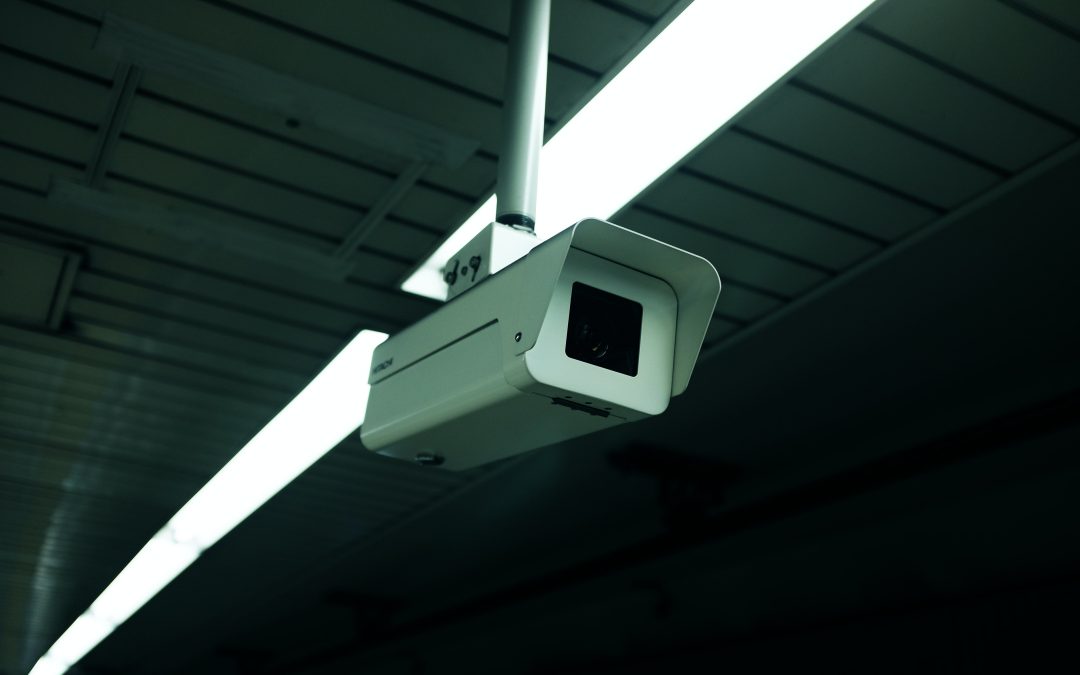
This guide helps you adjust your business strategy by shifting your perspective on scope so you’re solving the right problem.
Key Takeaways
-
Learn why most tech fixes miss the real issue: scope
-
Understand the 3-layer lens: Optimize, Reframe, Disrupt
-
Discover how perspective drives better business decisions
-
See where your current systems may be misaligned with your goals
-
Walk away with a practical lens to guide your next strategic move
In my 35 years in IT, I was always disturbed by one thing: I could see the whole system, while everyone else focused on the parts.
At first, I thought it was just a quirk. But seeing it over and over, I realized it was about having different perspectives. I’ve seen management and great teams trying to fix the problem on the wrong layer.
- They’d jump to tools when what was needed was perspective.
- They’d push for automation when the real issue was structure.
- They’d keep patching systems that were never built to scale.
If this sounds familiar, the problem isn’t tech, it’s scope. I’ve worked with everyone from solo founders to corporate teams and the ones who move fastest are the ones who know what kind of problem they’re actually solving. That’s when it hit me: It’s not about what’s broken. It’s about how you look at it. So I came up with a simple lens to help clients orient themselves in their best way forward.
It’s called: Optimize. Reframe. Disrupt. Because when your business feels stuck or strained, there are only three strategic moves you can make:
- You can optimize what you’ve got
- You can reframe how you define the problem
- Or you can disrupt the system entirely
So, if you’re not getting traction, you’re probably solving things on the wrong layer. The ability to discern that? That’s the edge. Let’s break it down.
Optimize: For when the system is right, just sluggish
This is where most companies think they need help.
- Work overload? Slap on another tool.
- Too many emails? Plug in an AI agent.
- Repetitive tasks? Just automate it.
Sometimes they’re right. A few smart integrations can save hours and reduce friction. But here’s the trap: If you optimize a system that’s fundamentally outdated, you’re just making it fail faster. It feels like progress, but really, you’re accelerating dysfunction.
Most companies optimize in isolation. One desk. One workflow. One pain point. Meanwhile, the root pattern -the bigger architecture- remains untouched.
Reframe: When you need to adjust you business strategy (Not just your tech)
This is where things get interesting, especially if you have a feel for systems. Maybe the workload isn’t the problem. Maybe it’s the entire way the automation happens.
- What if the issue isn’t the tasks, but the way decisions flow between people?
- What if a shared new portal made more sense than another tool?
- What if decisions weren’t buried in email threads, company departments siloed, but clearly mapped, and tracked for impact?
Reframing means questioning the assumptions baked into your current operations.
Practically this means stepping back and zooming out. It can be as simple as going for a walk in the park. It also means sitting down with stakeholders and asking uncomfortable -but transformative- questions.
Yes, it takes courage, because you’re not just changing a system, you’re inviting others to see differently. But here’s the payoff. Having this conversation brings clarity, and that clarity leads to one of two things:
- You either circle back to a smarter optimization
- Or you realize it’s time to reinvent
Either way, it moves you forward.
Disrupt: For when it’s time to reimagine and reinvent
This is the space that lights me up. Because disruption isn’t just about breaking things.
It’s about creating something that better fits reality. Something that is better aligned with where the market actually wants to go. It takes vision, creativity and a proper understanding of business.
Tech? That’s the easy part, but it comes after. Some clients show up wanting to automate a few workflows. But sometimes, what we can really do is set a new design that shifts how the entire market operates. Disruption isn’t reckless. It’s nuanced.
True disruption treats automated processes as building blocks of your mission. It aligns data flows, information management and tech systems with your company’s vision and strategic goals.
A final note on this: Always aim for simplicity over complexity.
Not everyone is ready for this. But if you are. I can help you get there.
My True Skills – A New Perspective
On paper, I’m an IT consultant. In practice?
- 🧩 I connect the pieces. So automation, data, and tools support each other, instead of maintaining silos.
- 🎯 I align the system to the mission. So tech decisions make sense again—because they should serve where you’re really going.
- 📐 I design for progress at scale. So infrastructure and processes grow with you and don’t have a ‘mind of their own’. But that’s just the start.
I help founders and managers shift how they see, their systems, their strategy, and themselves. The approach used: Optimize. Reframe. Disrupt.
It’s a lens for transformation. Because often, the system isn’t broken. Your perspective on things simply evolves.
Do you recognize yourself in this? I offer Strategic Clarity Sessions. A 1-on-1 conversation to figure out on what layer you’re solving issues and what your next move really calls for. It’s not a tech audit, but a reflection on strategy.
If that line resonates, reach out.
No pitch. Just a real conversation.
— Gerard.
Send me a PM on LinkedIn or plan a call.






